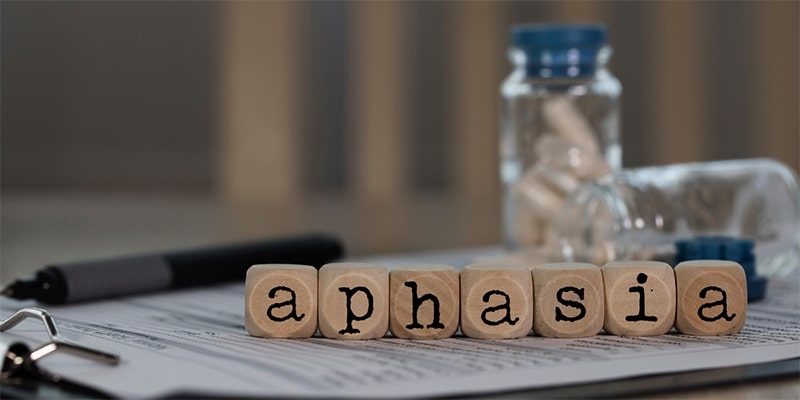Defining Causes, Types and Symptoms
Aphasia is a language and communication disorder caused by brain damage in the area(s) specific to language control and understanding. It short circuits verbal communication and leaves patients unable to communicate effectively with others, most typically because the words spoken are all in a jam, mixed up beyond recognition. The host of problems can sometimes extend to reading, writing, understanding speech, expressive and receptive communication, and listening capacities. For example, aphasia victims can speak in incomplete sentences, apply incorrect word order, or make word choices that sound nonsensical and make it impossible for the listener to understand.
Aphasia impacts both men and women equally, typically nearing middle or old age. Although it is a condition that very few Americans have even heard of, aphasia affects in and around 2 million people in the United States according to the National Aphasia Association. It is important to understand that this condition is not classified as a mental disorder and is not, as well, indicative of reduced intelligence.
Causes
Aphasia is caused by reparable or irreparable damage in the portion of the brain that controls language skills. Causes vary, but include:
- Brain tumor
- Stroke (it affects 25-40% of people who have had a stroke)
- Infection in the brain or other areas
- Head injury
- Dementia and other neurological disorders
- Degenerative diseases
- Seizures, migraine and a transient ischemic attack (TIA) may cause temporary aphasia
Aphasia: Types and Symptoms
Symptoms depend on the type of aphasia a person has. These are some examples, although there are more.
- Broca’s Aphasia: Also known as non-fluent or expressive aphasia, it affects the left frontal area of the brain, so difficulty in speaking (incomplete sentences, missing words) can also be accompanied by a limited ability to understand other person’s speech, ensuing frustration, and, as well, weakness or paralysis in the right-side arm and leg of the body.
- Global Aphasia: This is the most severe type and follows damage to the front and back of the brain’s left area. Limited ability to speak and comprehend language is usually tied in with the nearly nonexistent capacity to read and write.
- Wernicke Aphasia: Sometimes termed receptive or fluent aphasia, this type is characterized by damage to the left side of the brain. Patients develop problems understanding the speech of others and they themselves may speak in extended and confusing sentence structures, introducing confusing, unnecessary, even made-up words.
- Anomic Aphasia: Here, the problem is actually finding the right words, normally nouns and verbs. Even though patients can normally speak well, this problem is the ensuing frustration when the right words cannot be found.
Diagnosis and Treatment
Although the process of diagnostics typically begins with a speech-language pathologist imparting comprehensive language tests and assessing severity and possible treatments, brain imaging is also an option.
- Computed Tomography or CT Scan uses more detailed scans of body parts and organs than X-rays.
- Magnetic Resonance Imaging or MRI diagnoses combining large magnets, radio frequencies and computer screens for detailed body structure imaging.
- Positron Emission Tomography or PET is also a computer imaging technique that applies radioactive substances to view body processes.
Once diagnosed, treatment targets communication ability improvement through language speech therapy, non-verbal communication therapy using computers and pictures, as well as group and talk therapy for both patients and families. The latest arrival is the non-invasive Transcranial Magnetic Stimulation (TMS), which attempts at improving certain aphasia symptoms, but the tests and results are too new to have a clear assessment of (positive) impact yet.
Sources:
https://www.hopkinsmedicine.org/health/conditions-and-diseases/aphasia
https://www.healthline.com/health/aphasia#causes


